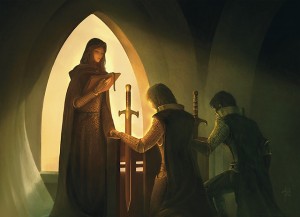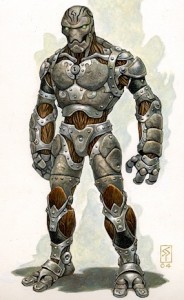I’ve realized of late that I enjoy designing tough encounters. Encounters where perhaps the forces border on overwhelming. Where encounter after encounter my players are being pushed to the brink. It’s almost like a test of endurance, can they take just one more encounter? Will they prevail or will I have finally pushed them too far?
Much of my motivation for designing encounters this way comes from taking too many extended rests with daily powers unused and healing surges remaining. These extended rests haven’t been taken because we though we needed them or could get away with them. No, they came about because we had completed the adventure. In short as a player in 4e there have been few encounters that I feel have truly pushed myself and other players to the edge.
Of course what I have also realized is that making every encounter a slug fest, where at the end of the final encounter the party is completely out of resources is also boring. Furthermore, my players are beginning to wonder if I’m out to kill their characters. When the time for an extended rest rolls up they have a look of relief on their faces. Instead of a feeling of satisfaction or euphoria at completing the encounters, they are just glad it’s over.
I realize that while I’m challenging the players, I’m not creating moments for them to feel truly heroic. As a result I’ve developed a series of guidelines to assist me in my adventure design.




